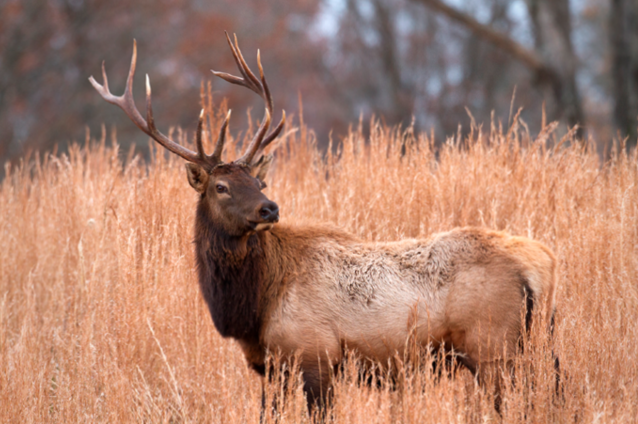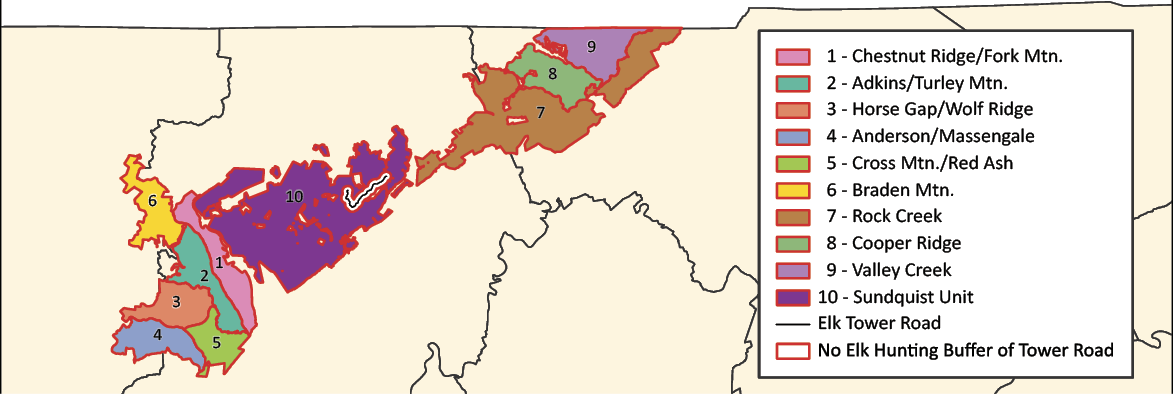Elk Regulations

Incidental Take of Elk
A legal deer hunter may harvest an elk (either sex) incidental to deer hunting on all private and public lands open to deer hunting except for public and private lands located in Anderson, Campbell, Claiborne, Scott, and Morgan counties and except for Big South Fork River and Recreation Area, Scott State Forest, and Obed National Scenic River Corridor. Only one elk per year may be harvested incidental to legal deer hunting. Elk harvested via incidental take must be reported to the TWRA on the day of harvest by calling 1-800-831-1174 to allow physical checking by TWRA personnel.
Special Regulations
- All elk harvested by elk quota permit holders must be checked in at the North Cumberland WMA office on the day of harvest.
- The location must be adequately marked so that TWRA employees can identify the harvest site, which can be accomplished by either providing GPS coordinates or accompanying a TWRA employee to the harvest site.
- Use or possession of electronic radio-tracking equipment is prohibited.
- Bugling or calling of elk is prohibited within the Elk Hunting Zones during all elk hunts except by permitted hunters and their assistants.
2026 Elk Hunting Units

Elk Restoration in Tennessee
25 Years of Conservation and Management
This year marks the 25th anniversary of elk restoration in the Volunteer State. In December 2000, hundreds of excited onlookers watched as 50 elk from Elk Island National Park in Alberta, Canada were released into the Cumberland Mountains of east Tennessee where elk historically occured. Over the next eight years, and with the help of several supporting partners, TWRA would go on to conduct four additional release efforts, bringing the restoration project to a total of 201 elk back into what is now North Cumberland Wildlife Management Area.
In 2009, the state’s first elk quota hunt was held, and five lucky hunters successfully harvested the first elk in Tennessee in nearly 145 years! With intensive habitat management and sound harvest regulations at the forefront of conservation efforts, TWRA now estimates that the population has doubled in size and continues to steadily grow today.
With these positive responses, elk hunting opportunities have increased, with the total number of available permits nearly quadrupling since the first hunt. Statistically, those drawn for an elk hunt in Tennessee have had fairly high success rates each year (>70%), with over 90% of harvested bulls coming from public land on the North Cumberland WMA.
Promoting suitable elk habitat remains a priority of the TWRA Elk Program. Application money secured from the annual elk quota hunt and conservation raffle continue to support the critical habitat projects across thousands of acres.

